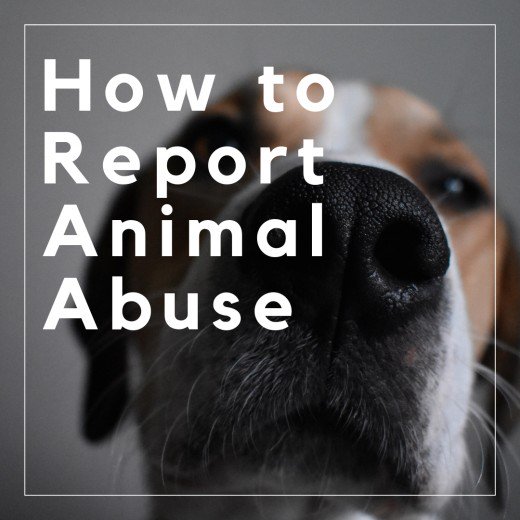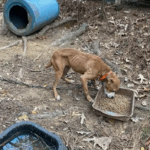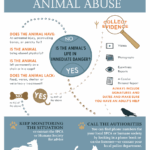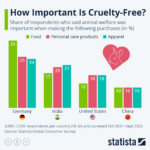In the age of social media, disturbing content, especially those involving animal cruelty, can go viral with alarming speed. As a burgeoning phenomenon, the manifestation of animal cruelty on the internet evokes a jarring mixture of outrage and fascination. Videos depicting animals in distress, whether through neglect, abuse, or exploitation, create visceral reactions among viewers. Yet, the overwhelming question remains—how can individuals transform their horror into action and effectively report such abuses? Understanding the processes and implications of reporting animal cruelty on the internet is crucial in the pursuit of justice for voiceless beings.
To navigate the complexities of internet animal cruelty, we must first acknowledge the scope of the problem. In an era where sensationalism often drives engagement, videos showcasing animal suffering, regardless of their authenticity, can garner millions of views. This phenomenon raises eyebrow-raising inquiries into human psychology and our collective ethical responsibilities. Why do we share these videos? Is it a morbid curiosity, or do we genuinely seek to catalyze change? As individuals, our fascination with these visuals often obscures the gravity and urgency of the implied issues. Addressing animal cruelty requires awareness of the implications behind sharing such content, especially when it lacks proper context.
When individuals encounter distressing content, the first step is not merely to react but to understand the significance of their response. Rampant social media is often flooded with these harrowing images and videos, leaving many feeling overwhelmed or helpless. Nevertheless, it is vital to channel that energy into a constructive dialogue. The initial method to report animal cruelty online is to identify the platform where the content originated. Major social media networks, such as Facebook, Instagram, and Twitter, have protocols for reporting abusive content. However, noticeable disparities exist, which can lead to confusion on how to report effectively.
For instance, Facebook offers users the ability to flag posts containing animal abuse. By clicking on the three dots in the corner of a post, you can select “Report Post” and subsequently indicate the issue. Instagram similarly provides a reporting option by tapping on the three-dot icon. Twitter allows users to report Tweets, creating pathways for prompt reporting. It is essential, however, to provide a detailed explanation when submitting your report. The more information shared, the easier it is for moderators to take necessary action. Highlighting specific aspects of cruelty—such as the animal’s species, the nature of the abuse, and where the incident occurred—can enhance the visibility of your report.
External resources also play a pivotal role in combating online cruelty. Various organizations, like the ASPCA and PETA, offer platforms for engaging the issue with seriousness and authority. They facilitate comprehensive reporting methods that span across several jurisdictions. Familiarizing yourself with local animal protection laws is equally paramount. Various states in the United States dictate rigorous penalties for animal cruelty and neglect. In such cases, knowledge of legislation can enhance efforts to report and seek justice. Reporting through the correct legal channels can substantiate claims beyond social media, rallying multiple forces toward accountability.
However, reporting abuse is merely the tip of the iceberg. An exploration into animal cruelty on the internet reveals deeper societal issues at play. Factors such as desensitization to violence, cultural attitudes toward animals, and a lack of ethical frameworks contribute to a complex issue that often remains overlooked. The propensity for viewers to engage with cruelty-laden content may stem from a detachment—an inability to empathize with suffering that is not immediate or tangible. Numerous studies suggest that a consistent exposure to online violence can dull emotional responses, leading to apathy toward animal welfare. The question then becomes, how do we reawaken that sense of empathy and accountability?
Creating a community dedicated to animal advocacy is essential. Community engagement can foster a network of support and awareness. Educational programs aimed at informing individuals about animal welfare issues can reshape perceptions and encourage a proactive approach to reporting abuses. By incorporating educational campaigns that resonate with younger audiences, we can cultivate a generation that comprehends the weight of their digital footprint. Hosting virtual discussions and workshops can inspire a culture where animal rights are championed, and cruelty is uniformly abhorred.
Furthermore, it is crucial to emphasize positive engagement with animals rather than foster a voyeuristic relationship. Promoting responsible pet ownership and humane treatment can gradually alter the damaging narratives often perpetuated online. Cultivating an appreciation for the intrinsic value of animal life can shift the focus from sensationalism to advocacy. Instead of merely sharing shocking imagery, users can highlight success stories of rescue initiatives or share educational content regarding humane treatment.
As we delineate the contours of what constitutes internet animal cruelty, a symbiotic relationship between awareness and action becomes evident. The Internet offers avenues for mobilization, but it also necessitates a conscientious commitment to responsibility. Each shared video holds the potential to perpetuate a cycle of desensitization unless coupled with informed and intentional advocacy. Reporting animal cruelty transcends clicks and shares; it represents a steadfast commitment to uphold the dignity of all living creatures.
As we forge ahead, the power lies within individuals to transform outrage into meaningful action. We must embrace our capacity to report, educate, and advocate. Each step undertaken has the potential to reverberate within our communities, cultivating a culture where justice extends to every sentient being. Only through collective vigilance and active engagement can we endeavor to shift the narrative surrounding animal cruelty from one of fascination to one of justice. An informed society is an empowered one, and together, we can create resonant change.







